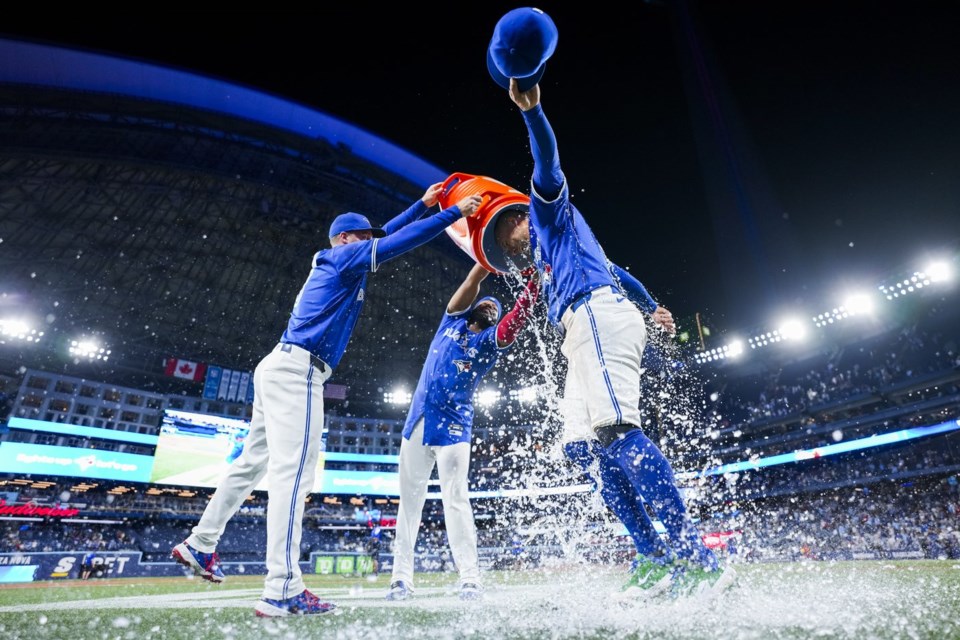The Blue Jays may be one of the hottest teams in Major League Baseball, but Toronto is quickly becoming its hottest city. Literally.
A recent study has found that Toronto's average temperature has risen 3 degrees Celsius — the most among all Major League Baseball cities during the playing season — over the past 40 years.
"I was a little surprised," said Jennifer Brady, senior data analyst and research manager at the United States-based non-profit Climate Central. "There are some places in the U.S. where the summers are not getting that much warmer, so in that sense, I knew those places were going to be in the Midwest.
"Just looking at that general Great Lakes region and Toronto was above all of those cities, notably. It was a surprising result to see that."
The Arizona Diamondbacks, based in Phoenix, were second on Climate Central's list with a 2.8 C rise. The average temperatures across all of MLB's 27 cities have gone up about 1.7 degrees since 1974, according to the study.
The Blue Jays (55-41) open a six-game homestand on Friday night when they welcome the San Francisco Giants (52-45) to Rogers Centre.
A heat wave in Toronto ended on Thursday, with the temperature expected to reach a high of 21 on Friday, 28 on Saturday and 27 on Sunday. Another heat wave is predicted on Wednesday with a high of 31 anticipated as the Blue Jays finish a three-game series with the visiting New York Yankees.
Rogers Centre's dome is closed during extreme heat warnings in Toronto, a necessary safety measure for players, staff and fans. Cincinnati Reds shortstop Elly De La Cruz and Seattle Mariners reliever Trent Thornton both fell ill during a heat wave that hit the Midwest on the weekend of June 21-22 in St. Louis and Chicago, respectively.
"When you have players getting sick on the field, that is going to really spotlight that this is not just a few people being uncomfortable, this is finely tuned athletes who cannot handle this heat," Brady said. "Obviously, people can't just put a dome on the stadium easily.
"That's why moving to say night games may be one way to at least have more games when it's a little cooler and not during the hottest part of the day."
Brady noted that one reason the average temperature is rising across the continent is that while nighttime is cooler, it's not cooling off as fast as it once did.
Another contributing factor to the study's findings is that the baseball season stretches from late March to October but those opening and closing months are not as cool as they once were.
"Summer no longer starts in June and ends at the end of August. Summer temperatures are well into May and September," said Brady. "We're almost capturing the new summer with the baseball season."
Climate Central, using data from the U.S. National Oceanic and Atmospheric Administration, said that Earth is already at 1.5 C of warming due to climate change and burning fossil fuels. Canada is warming at a rate twice the global mean average, according to Environment and Climate Change Canada.
"(The rising temperatures) are very dangerous and life threatening in many ways, but they're also just really uncomfortable day to day," said Brady. "They're making these impacts on our life day to day, which maybe we would just kind of say, 'oh, you know, just a hot day.'
"But there weren't that many hot days before and I often say that my job, because I mainly do data analysis, is basically just to confirm what you suspect."
Soccer has also been impacted by North America's rising summer temperatures.
Extreme heat and thunderstorms made an impact on FIFA's newly expanded tournament for club teams. The Club World Cup was held in 11 American cities from June 14 to July 13.
FIFA adapted by tweaking its extreme heat protocol to include extra breaks in play, more field-side water, and cooling the team benches with air fans and more shade.
Still, Chelsea midfielder Enzo Fernández said the heat made him dizzy and urged FIFA to avoid afternoon kickoffs at next year's World Cup, which will be held in the U.S., Canada, and Mexico.
FIFA president Gianni Infantino addressed the heat concerns, saying the handful of World Cup stadiums that are covered would be used for daytime games next year.
— With files from The Associated Press.
This report by The Canadian Press was first published July 18, 2025.
John Chidley-Hill, The Canadian Press




